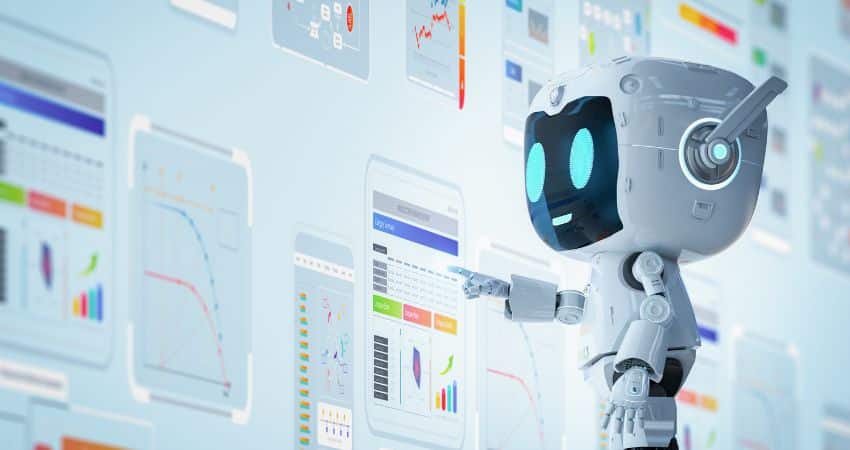The Role of AI and Automation in IT Outsourcing

In today’s hyper-competitive digital economy, businesses are under increasing pressure to do more with less. One of the most transformative forces reshaping the IT outsourcing landscape is the integration of Artificial Intelligence (AI) and automation. These technologies are no longer buzzwords—they are strategic assets enabling companies to enhance operational efficiency, improve service delivery, and significantly reduce costs.
This article explores how AI and automation are redefining IT outsourcing models, driving innovation, optimizing costs, and setting new benchmarks for quality and speed.
The Evolution of IT Outsourcing

IT outsourcing began as a cost-saving measure, allowing companies to delegate non-core tasks such as help desk support and software development to offshore providers. Traditionally, IT outsourcing has been a strategic choice for businesses aiming to cut costs and access specialized talent without the need for in-house expertise. Countries like India, the Philippines, Vietnam, and Brazil have long been hubs for outsourcing services, offering a wide range of IT operations at lower costs.
However, the advent of AI and automation has ushered in a new era, often referred to as “Outsourcing 2.0” where the focus has shifted from merely reducing costs to enhancing efficiency, innovation, and strategic growth. Enter AI and automation, which are redefining the very purpose and value of IT outsourcing. With intelligent systems capable of learning, adapting, and optimizing tasks, businesses now seek digital-first outsourcing partners who can blend technology with human expertise.
Read more: Top 10 Outsourcing Software Development Services to Succeed in 2025
What Is AI and Automation in IT Outsourcing?
In the context of IT outsourcing, AI refers to systems that simulate human intelligence to perform tasks such as decision-making, problem-solving, and predictive analytics. Automation, on the other hand, involves the use of technology to carry out tasks with minimal human intervention.
Together, AI and automation are used in outsourcing to:
-
Automate repetitive tasks (e.g., server monitoring, code testing)
-
Analyze large datasets for actionable insights
-
Predict incidents before they occur
-
Personalize user experiences
-
Improve accuracy and reduce human error
Types of Automation Used:
-
Robotic Process Automation (RPA): Automates rule-based processes.
-
Cognitive Automation: Uses machine learning to adapt to new scenarios.
-
IT Process Automation (ITPA): Streamlines IT operations like ticketing, patching, and provisioning.
How AI and Automation Transform IT Outsourcing
Automating Repetitive Tasks
One of the most significant contributions of AI to IT outsourcing is its ability to handle repetitive, rule-based tasks with unmatched speed and accuracy. Tasks such as data entry, system monitoring, and software updates, which were once manually performed by human workers, can now be automated. This not only reduces the likelihood of errors but also frees up human resources to focus on more complex and value-added activities.
Enhancing Data Analysis and Decision-Making
AI’s capacity to analyze vast amounts of data quickly and accurately has made it an invaluable tool for IT outsourcing. By leveraging machine learning algorithms, outsourcing firms can offer clients deeper insights into operational inefficiencies, market trends, and consumer behavior. For instance, in the financial sector, AI can analyze market patterns to help companies make more informed investment decisions. Additionally, AI-driven analytics can predict potential IT issues before they occur, enabling proactive problem-solving and reducing downtime.
Improving Cybersecurity
Cybersecurity is a critical concern for businesses, especially when outsourcing involves handling sensitive data. AI-powered security systems can monitor networks in real-time, detect threats, and respond to potential breaches swiftly. These systems use pattern recognition to identify and prevent fraudulent activities, ensuring that valuable data remains secure. By integrating AI into their security protocols, outsourcing partners can build stronger, more trustworthy relationships with their clients.
Streamlining Vendor Selection and Contract Management
Selecting the right outsourcing partner is a crucial decision for businesses. AI simplifies this process by analyzing historical data on vendor performance, delivery schedules, and work quality. Machine learning algorithms can help businesses make more data-driven decisions when evaluating potential partners. Furthermore, AI automates contract management by monitoring compliance, tracking deadlines, and identifying risks, thereby reducing the likelihood of disputes.
Real-Time Performance Monitoring
Tracking the performance of outsourced teams has traditionally been challenging. AI offers real-time analytics to monitor key performance indicators (KPIs), such as task completion times, error rates, and customer satisfaction scores. This allows businesses to identify and address issues promptly, leading to better outcomes for both the client and the outsourcing partner.
Benefits of AI and Automation in Outsourced IT Services
Increased Efficiency and Cost Savings
AI systems operate around the clock without fatigue, offering enhanced productivity compared to human workers. The ability to perform repetitive tasks without error can significantly reduce costs. For example, an AI-powered customer service team can handle thousands of queries simultaneously, cutting down the need for large human call center teams.
Scalability and Flexibility
AI technologies can easily scale to meet growing business demands. As companies expand, AI-driven outsourcing solutions can accommodate higher volumes of work without requiring additional human resources. This scalability is particularly valuable for seasonal businesses or industries with fluctuating demands.
Enhanced Collaboration
AI facilitates smoother communication between teams across different regions and time zones. Tools like AI-powered virtual assistants and natural language processing (NLP) systems allow human workers to collaborate more effectively, breaking down language barriers and reducing misunderstandings.
Challenges and Considerations
While the benefits of AI in IT outsourcing are substantial, businesses must also consider several challenges:
Data Privacy and Security
Outsourcing often involves sharing sensitive data with third-party providers. AI systems, while effective at detecting threats, also introduce new risks, such as algorithmic bias and model inaccuracies. Companies need robust governance frameworks to oversee AI processes and ensure data privacy compliance.
Reskilling the Workforce
As AI automates more tasks, businesses may need to invest in reskilling their workforce. This includes training employees to collaborate with AI technologies and shifting them toward more value-added activities like strategy and creative problem-solving. Proper change management is essential to minimize the impact on staff morale and maintain a positive company culture.
Read more: Why Does Software Development Outsourcing Fail?
Real-World Use Cases
1. Automated Software Testing
Many outsourcing firms now rely on AI-based testing platforms that can automatically write, run, and optimize test scripts—reducing testing times by up to 80%.
2. Intelligent Chatbots for IT Support
Tier-1 support can be managed by AI chatbots capable of solving common issues such as password resets, VPN connectivity, and software installation.
3. Network Monitoring
AI-powered tools analyze network performance data in real time, detecting anomalies, predicting outages, and triggering alerts or self-healing actions.
4. Code Review and Refactoring
AI algorithms can identify vulnerabilities or inefficiencies in code, offering suggestions or even making corrections autonomously.
5. Data Annotation and Classification
In projects like AI training or big data analytics, automation tools quickly process and label large datasets, reducing time and labor costs significantly.
Cost Savings and ROI: A Data-Driven Look
Let’s break down the Return on Investment (ROI) from using AI in IT outsourcing:
| Area | Traditional Cost (Annual) | AI-Enhanced Cost | Savings |
|---|---|---|---|
| L1 Support | $100,000 | $30,000 | 70% |
| Manual QA | $200,000 | $80,000 | 60% |
| Network Monitoring | $150,000 | $50,000 | 66% |
| Data Processing | $300,000 | $120,000 | 60% |
Gartner projects that by 2025, organizations that use AI and automation in IT services will reduce their operational costs by at least 40% compared to competitors.
AI-Powered Tools in IT Outsourcing
The following AI-driven tools and platforms are widely adopted in the outsourcing ecosystem:
-
UiPath, Blue Prism, Automation Anywhere – for Robotic Process Automation (RPA)
-
ServiceNow and BMC Helix – for IT service automation
-
Dynatrace and Splunk – for performance monitoring and AIOps
-
Testim and Applitools – for AI-based testing and QA
-
Jira and Monday.com – for project automation and workflow management
-
ChatGPT API and Dialogflow – for AI-powered customer service and support bots
Outsourcing partners who invest in these tools not only accelerate service delivery but also offer tech-enabled value-adds to clients.
Future Outlook: AI-First Outsourcing Models
The future of IT outsourcing will be shaped by AI-first models where automation isn’t just an add-on but forms the core of the service delivery framework.
Trends to Watch:
-
Hyperautomation: A Gartner-identified trend involving the integration of AI, RPA, and machine learning to automate end-to-end processes.
-
Self-Healing Systems: Automated systems that not only detect issues but autonomously fix them.
-
AI-Driven DevOps (AIOps): Enhances DevOps pipelines with machine learning for faster deployments and fewer bugs.
-
Predictive SLA Monitoring: Intelligent systems that forecast SLA violations before they occur and offer remedies.
-
No-Code/Low-Code Automation: Allows non-technical teams to build workflows, reducing the dependency on developers.
By 2030, it’s expected that 90% of outsourcing contracts will include AI and automation as a core component.
Conclusion
AI and automation are fundamentally transforming the IT outsourcing landscape. What was once a labor-driven, cost-cutting initiative is now an innovation-driven, tech-led strategy. By leveraging intelligent tools and automation platforms, outsourcing providers can:
-
Deliver faster, smarter, and more scalable services
-
Reduce operational costs by 40–70%
-
Enhance decision-making and predict outcomes
-
Provide 24/7 proactive support
-
Maintain competitive advantage through innovation
For businesses looking to outsource IT services in 2024 and beyond, selecting a partner that harnesses the power of AI and automation is no longer optional—it’s essential.


